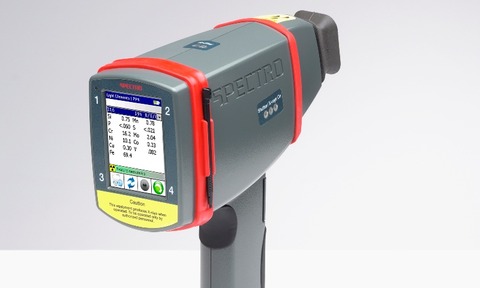
The xSORT handheld XRF spectrometer now comes with a new features for precious metal analysis.
According to SPECTRO, the portable instrument is able to identify the gold and silver content in many precious metal alloys within seconds.
In addition, the XRF instrument’s non-destructive measuring makes it suitable for applications in archaeometallurgy.
For precious metal recycling, the handheld spectrometer offers security for both buyer as well as seller.
The precious metal content of typical gold alloys can be determined well enough with traditional touchstone testing (acid test), but this procedure requires someone with experience - and the seller has to believe the collector.
“Our instrument, however, shows the precious metal content to both parties,” said Dirk Wissmann, who is responsible for the XRF spectrometer product line at SPECTRO.
“Best of all, the pieces of jewelry do not need to be ground and scratched for measurements with the XRF instrument. This is important if the value of a piece of jewelry is to be determined or if the jewelry is to be further marketed as second-hand jewelry and not just be thrown into the recycling bin.”
The SPECTRO xSORT also has an optional integrated video camera so the measuring point can be exactly determined.
An interesting secondary application for the portable SPECTRO xSORT is the scientific study of archaeological gold and silver treasures.
A SPECTRO xSORT already has been used to examine antique objects found in Turkey.
It is possible to reconstruct the manufacturing processes and to identify the period of time in which objects were created by investigating the precious metal contents and determining the by-elements.
Because sometimes stylistically different silver jewelry composed of similar materials are found at different locations, it is possible to use the archaeometallurgical investigations to trace antique trade routes.




